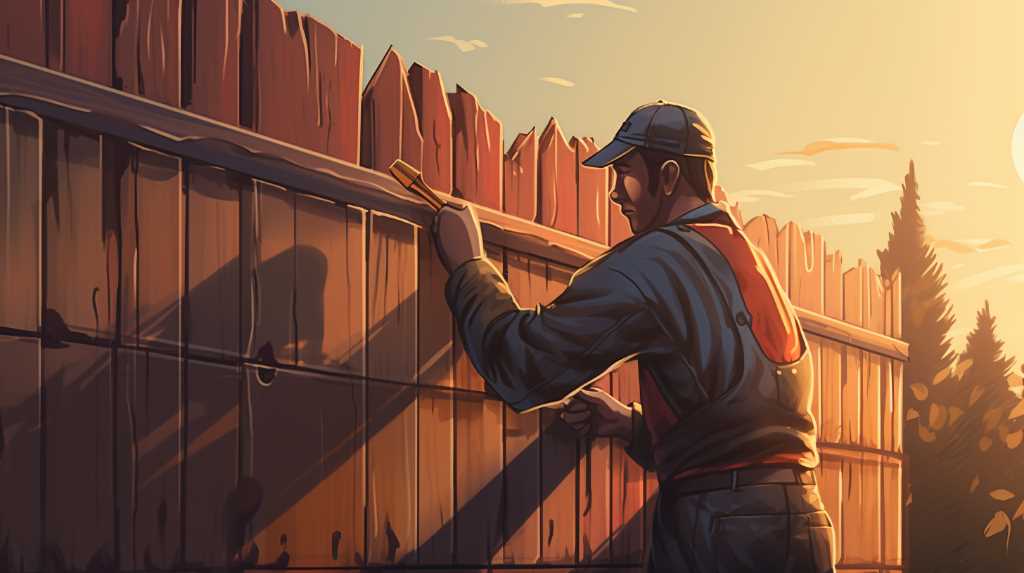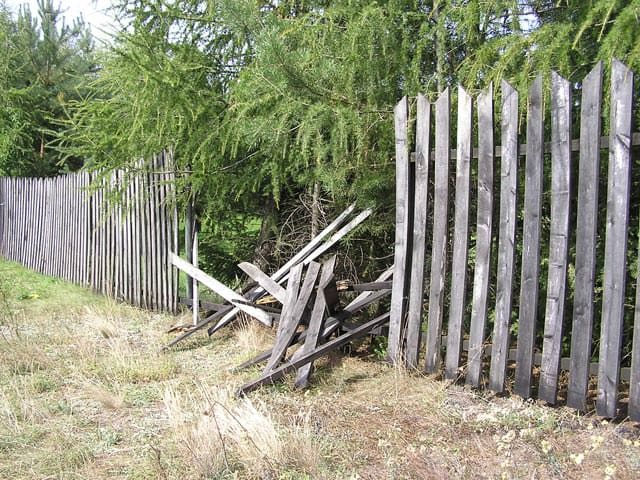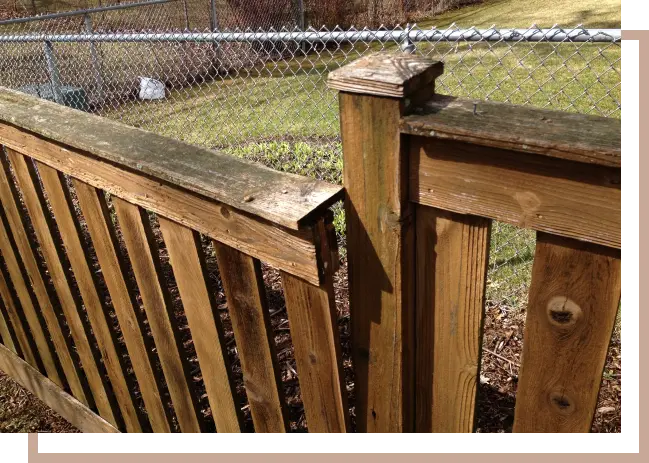Tree Removal
Mend It Like a Pro: the Ultimate Guide to Fence Panel Repair

Hey there, folks! Ever find yourself staring at a broken fence panel, wondering how to fix it like a pro? Look no further! In this ultimate guide, I’ll walk you through the steps to mend your fence like a seasoned expert.
From repairing damaged slats to reinforcing weak spots, we’ve got you covered.
Get ready to roll up your sleeves and tackle those repairs head-on.
Let’s make your fence as good as new, shall we?
Damaged Slats
When a fence panel has damaged slats, I usually start by assessing the extent of the damage and determining the best course of action. Safety is paramount when it comes to fence repairs, so it’s important to take the necessary precautions before beginning any work.
First, make sure to wear protective gloves and safety goggles to prevent any injuries. Next, remove any loose or broken slats using a pry bar or hammer. Once the damaged slats have been removed, measure the dimensions of the gap to ensure a proper fit for the replacement slats.

Cut the new slats to size and attach them securely to the fence panel using nails or screws. Finally, inspect the repaired area to ensure it’s sturdy and secure before finishing with any necessary paint or sealant.
Rot Treatment
To effectively address rot in fence panels, it’s crucial to promptly identify and treat the affected areas. Rot can weaken the structure of the fence and compromise its stability, making it a safety hazard.
The first step is to thoroughly inspect the panels for any signs of rot, such as discoloration, soft spots, or a musty odor. Once identified, the rot should be removed by cutting out the affected area using a saw. It’s important to wear protective gloves and goggles during this process to prevent any injuries.
After removing the rot, treat the area with a wood preservative to prevent further decay. Finally, replace the damaged section with a new piece of wood and secure it properly.
Regular inspections and preventive maintenance will help ensure the longevity of your fence panels.
Reinforcement
Now, let’s explore how reinforcement can further enhance the stability and durability of your fence panels.
Reinforcing your fence panels is crucial to ensure they can withstand external forces and last for a long time.

One effective way to reinforce your panels is by adding cross braces. These horizontal supports are placed diagonally across the back of the panel, creating an X shape. They help distribute the weight evenly and prevent the panels from sagging or bowing.
Another option is to install metal brackets or corner braces at the joints of the panels. These provide additional strength and stability, especially in areas prone to high winds or heavy impact.
Additionally, using thicker or stronger materials, such as pressure-treated wood or metal, can significantly reinforce your fence panels.
Post Fixing
I frequently reinforce fence panels by fixing the posts securely in the ground. Proper post fixing is essential for the stability and longevity of your fence.
To start, choose the right type of posts for your fence, such as pressure-treated wood or metal posts.
Dig a hole that’s at least one-third the length of the post and wide enough to accommodate the post and concrete mix. Place the post in the hole, making sure it’s level and plumb. Use a post level to check for accuracy.
Then, fill the hole with concrete mix, making sure it completely surrounds the post. Allow the concrete to cure for at least 24 hours before attaching the fence panels.

Weatherproofing
One important step in fence panel repair is weatherproofing, which ensures the longevity and durability of your fence.
Weatherproofing protects your fence from the damaging effects of the elements, such as rain, snow, and UV rays.
To weatherproof your fence, start by inspecting it for any existing damage or weak spots. Repair or replace any broken or rotting panels, as these can compromise the overall strength of the fence.
Next, apply a weatherproofing sealant or stain to the entire fence, paying special attention to the end grains and exposed edges. This will create a protective barrier against moisture and prevent warping or cracking.
Additionally, consider installing a waterproof membrane or flashing at the base of the fence to prevent water damage.
Regular maintenance, such as cleaning and reapplying the sealant every few years, will ensure your fence stays weatherproofed and in good condition for years to come.

Hello there! I’m Logan Foster, the green-thumbed social media marketer behind the vibrant world of 1800TreeGuy.com. With roots firmly planted in arboriculture, I’ve branched out to help clients cultivate their dream outdoor spaces, one leafy canopy at a time. My knack for nurturing nature is more than a profession—it’s a way of life.
When I’m not talking trees and teaching the art of arboreal care, you can find me cheering on the Bulldogs—my alma mater’s pride and my forever team. My environmental studies there didn’t just teach me about ecosystems; they instilled a lifelong passion for protecting our planet.
Off the clock, I’m an adventurer at heart. Whether it’s trekking the Appalachian trails, pedaling down a mountain path, or crafting guides to share the wonders of the wild, I’m happiest with soil under my nails and the sun on my face. And let’s not forget Yoda, my pug sidekick. He may not have mastered the art of stillness, but his joyful grins are my daily dose of happiness.
I’m all about making connections—between people and the great outdoors and between my clients and their ideal landscape visions. My approach is personal; every tree has a story, and every garden reflects its caretaker.
If you want to green your scene or share in my outdoor escapades, give me a shout on Instagram or Facebook. Let’s cultivate a conversation and grow a community rooted in a love for the lush life.






